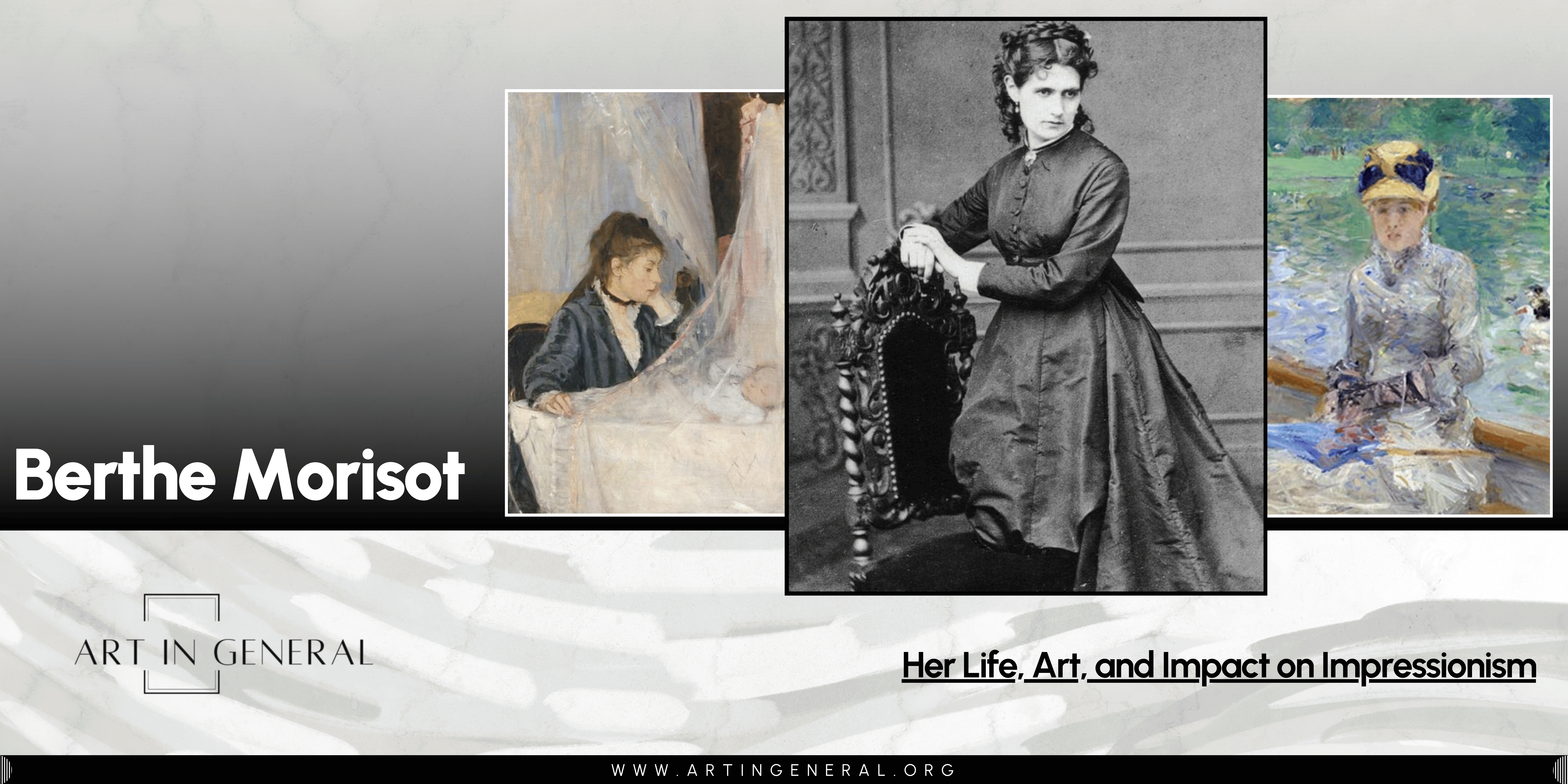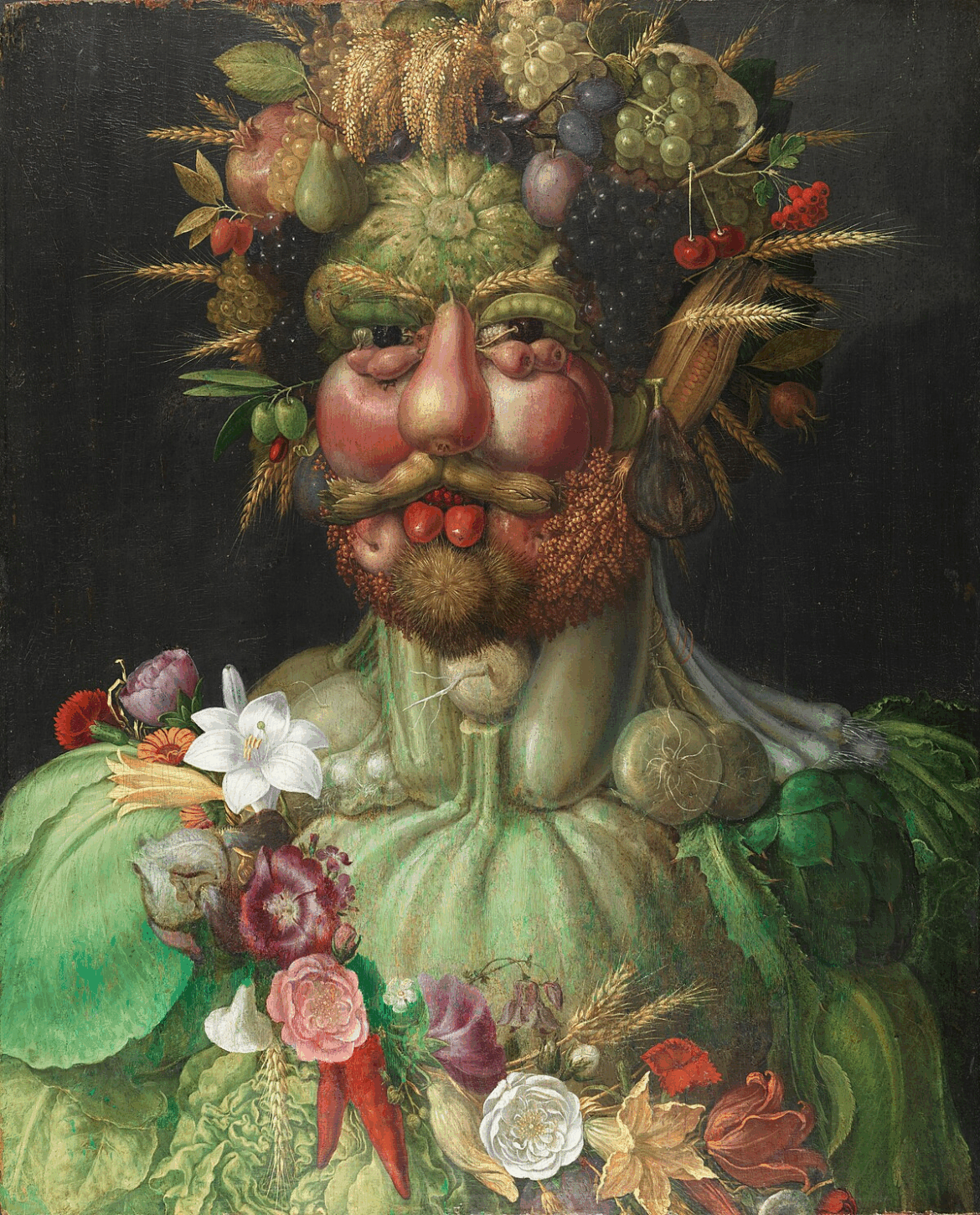 Who Was Berthe Morisot?
Who Was Berthe Morisot?

Berthe Morisot (1841–1895) was a pioneering French painter and one of the founding members of the Impressionist movement. Known for her delicate yet expressive brushwork and her focus on domestic life, Morisot became one of the most prominent female artists of the 19th century. As a central figure in the Impressionist group, Morisot helped redefine traditional gender roles in art, focusing on intimate scenes of women, children, and family life. Her mastery of light and color, combined with her unique perspective as a woman artist, set her apart in a male-dominated field and solidified her place in art history.
Early Life and Education
Berthe Marie Pauline Morisot was born on January 14, 1841, in Bourges, France, into a well-educated, affluent family. Her father, Edmé Tiburce Morisot, was a high-ranking civil servant, and her mother, Marie-Joséphine-Cornélie Thomas, came from a family of prominent intellectuals. Encouraged by her family’s cultural background, Berthe and her sisters received an excellent education, which included drawing and painting lessons—an uncommon opportunity for women at the time.
Berthe and her sister, Edma, studied under the landscape painter Jean-Baptiste-Camille Corot, a key figure in the Barbizon school. Under Corot’s guidance, Berthe began painting en plein air (outdoors), an approach that would become central to the Impressionist style. Despite her talent, Morisot faced societal challenges as a woman pursuing a professional art career, yet she remained determined to establish herself within the male-dominated art world.
What Did Berthe Morisot Paint About?
Berthe Morisot’s art focused largely on domestic scenes, with an emphasis on women, children, and everyday moments. Her intimate portraits capture the quiet beauty of family life, portraying mothers and children in tender, naturalistic settings. Morisot’s depictions of these subjects reflect her personal experiences as a woman, often offering a unique, female-centered perspective on themes that were rarely explored by male artists of her time.
Her work, like that of other Impressionists, also explored the effects of light and color. Morisot’s loose, delicate brushstrokes and vibrant color palette were key elements in her ability to convey fleeting moments. She often used softer tones, such as pastel pinks, blues, and whites, to create luminous, airy compositions that evoke a sense of warmth and immediacy.
Berthe Morisot and the Impressionist Movement
Berthe Morisot played a pivotal role in the development of the Impressionist movement, becoming the first woman to exhibit with the group. In 1868, Morisot was introduced to Édouard Manet, one of the leading artists of the time. Their friendship became a significant influence on both of their careers. Manet painted Morisot multiple times, and she, in turn, introduced him to the practice of painting en plein air. However, Morisot’s own artistic vision was distinct, and she carved out her own identity within the Impressionist group.
In 1874, Morisot exhibited in the first Impressionist exhibition, alongside notable figures such as Claude Monet, Edgar Degas, and Pierre-Auguste Renoir. This exhibition marked a break from the Paris Salon, where artists adhered to more rigid, academic standards. The Impressionists sought to capture fleeting moments and the effects of light, emphasizing color and spontaneity over detailed, formal compositions. Morisot’s works, such as “The Cradle” (1872), were praised for their delicate handling of light and atmosphere, qualities that became central to Impressionism.
Despite being one of the few women in the group, Morisot was respected as an equal by her male counterparts. Her involvement with the Impressionists challenged the traditional roles assigned to women in both society and the art world. While many female artists were confined to painting traditional “feminine” subjects, Morisot embraced the Impressionist ethos of painting modern life, including portraits, landscapes, and scenes of domestic intimacy. Her use of loose brushstrokes and light, bright color palettes made her one of the defining voices of the movement.
Relationship with Édouard Manet
Berthe Morisot’s friendship with Édouard Manet had a lasting impact on her artistic development. Although Morisot was greatly influenced by Manet’s daring approach to painting, she maintained her independence as an artist. Their close relationship was built on mutual admiration, with Manet often seeking her opinion on his works. Interestingly, Morisot’s influence was so strong that many critics observed that her presence softened Manet’s previously bold, dark tones, leading him toward a lighter, more Impressionist style.
Morisot later married Manet’s younger brother, Eugène Manet, in 1874. This relationship provided her with personal stability and allowed her to continue her career while raising a family. Her husband was supportive of her artistic pursuits, a rarity at the time when most women were expected to focus solely on domestic life. Together, they had a daughter, Julie Manet, who would go on to be a muse and subject in many of Morisot’s later works.
Iconic Works and Techniques
Berthe Morisot’s artistic oeuvre is rich with works that capture intimate, everyday moments, especially those related to women and domestic life. Her paintings, characterized by their soft, luminous quality, exhibit a mastery of light and brushstroke that set her apart from her contemporaries. Several of her most iconic works exemplify her talent for creating delicate yet powerful compositions that capture the essence of Impressionism.
“The Cradle” (1872)

One of Morisot’s most famous and celebrated works is “The Cradle” (1872). This painting depicts her sister, Edma, gazing lovingly at her newborn child. The composition captures the tender bond between mother and child, a theme that would become central to Morisot’s work. The soft, pastel colors and delicate handling of light create a dreamy, intimate atmosphere, drawing the viewer into the personal world of the mother and child.
- Technique: In “The Cradle,” Morisot employed light, loose brushstrokes to convey the softness of the fabrics and the delicacy of the infant’s skin. The way she uses light to illuminate the faces of the mother and child gently adds a layer of emotional depth to the painting. This technique, coupled with her careful attention to detail in the drapery and cradle, shows her ability to balance softness with precision, a hallmark of her style.
“Summer’s Day” (1879)

“Summer’s Day”, painted in 1879, is another of Morisot’s masterpieces. The painting shows two women in a boat on a serene lake in the Bois de Boulogne, a park in Paris. The scene is tranquil, yet filled with the vibrant energy of a summer day. The figures are bathed in light and the gentle reflections of the water shimmer across the canvas.
- Technique: In “Summer’s Day,” Morisot used short, visible brushstrokes to capture the play of light on the water and the vibrant colors of nature. Her use of color is particularly striking here, with the bright blues and greens of the water contrasting with the softer tones of the women’s dresses. The composition creates a sense of immediacy as if the viewer is observing a fleeting moment in time. Morisot’s ability to capture such moments was a key element of her Impressionist technique.
“Woman at Her Toilette” (1875)

In “Woman at Her Toilette,” Morisot explores another common theme in her work: women in moments of quiet reflection. The painting shows a woman seated at her dressing table, her figure softly illuminated by natural light. This intimate portrayal of a private moment highlights Morisot’s ability to depict the inner lives of women with sensitivity and grace.
- Technique: Morisot’s use of soft, diffused light in “Woman at Her Toilette” creates a serene and contemplative mood. The gentle blending of colors and the fluidity of her brushstrokes emphasize the elegance of the scene. Morisot often painted women in domestic or private settings, using these moments to challenge traditional representations of women in art. Her works celebrate the dignity and complexity of female experiences, making her a unique voice within the Impressionist movement.
Innovative Use of Light and Color
One of Morisot’s most significant contributions to Impressionism was her innovative use of light and color. Her paintings often feature soft, pastel hues—delicate pinks, blues, and whites—that create a sense of warmth and intimacy. Morisot’s ability to capture the way light interacts with her subjects, whether in an outdoor scene or within a domestic interior, is one of her defining characteristics as an artist.
- Light: Morisot used light not only to illuminate her subjects but also to convey emotion and atmosphere. In her paintings, light seems to gently envelop her figures, creating a sense of harmony and tranquility. This mastery of light, coupled with her loose, spontaneous brushstrokes, allowed her to create works that felt alive and immediate.
- Color: Morisot’s use of color was similarly groundbreaking. She avoided the dark, heavy tones often associated with academic painting, instead opting for light, vibrant colors that reflected the spontaneity and energy of modern life. Her choice of palette helped define the Impressionist style and set her apart from her peers.
Later Years and Personal Challenges
As Berthe Morisot continued to build her career as one of the leading figures of the Impressionist movement, she faced personal and societal challenges that affected both her art and her personal life. While her paintings were well-regarded by critics and fellow artists, she still had to navigate the restrictive norms of a male-dominated art world, as well as the responsibilities of family life.
In 1874, Morisot married Eugène Manet, the brother of her close friend and fellow painter, Édouard Manet. Their marriage was a supportive one, and Eugène, unlike many men of the era, fully encouraged and supported her artistic pursuits. Together, they had a daughter, Julie Manet, born in 1878, who would go on to feature in many of Morisot’s later works. Julie became a central figure in Morisot’s life and art, often depicted in tender, intimate moments that reflected their strong bond.
Balancing her roles as a mother and a professional artist, Morisot faced the challenges that many women of her time encountered—managing domestic responsibilities while continuing her creative work. Despite these challenges, Morisot remained dedicated to her art, producing some of her most beautiful and mature works during this period. Her paintings of Julie, such as “The Mother and Sister of the Artist” (1885), capture the loving, protective relationship between mother and child and stand as some of the most emotionally resonant pieces of her career.
Health Struggles
In the 1890s, Morisot’s health began to decline. She contracted pneumonia, a condition that worsened over time. Despite her illness, she continued to paint, producing works characterized by an even greater sense of lightness and fluidity. However, her illness ultimately led to her death on March 2, 1895, at the age of 54.
Morisot’s death was a significant loss to the art world, and her peers deeply mourned her passing. Claude Monet, Edgar Degas, and many others who had exhibited alongside her throughout the years recognized the enormous contributions she had made to the Impressionist movement. Morisot had not only established herself as a groundbreaking female artist but also helped to shape the very identity of Impressionism itself.
Evolving Artistic Vision
In her later years, Morisot’s artistic vision continued to evolve. Her brushstrokes became even looser, and her compositions more fluid, reflecting the emotional depth and complexity of her subjects. She began to experiment more with light and color, allowing her paintings to take on a dreamlike, ethereal quality. This can be seen in works such as “The Cherry Tree” (1891), where the boundary between the figures and their environment seems to dissolve into a harmonious, light-filled atmosphere.
Despite the personal challenges she faced, Morisot’s later works demonstrate her continued innovation and mastery of the Impressionist style. She remained deeply committed to capturing the beauty and essence of the every day, creating works that exude a sense of tranquility and emotional warmth.
The Role of Women in Morisot’s Work
Throughout her career, Morisot consistently portrayed women in her art. Her paintings celebrate the quiet, private moments of female life, presenting women not as passive objects but as active participants in their own lives. Whether painting mothers with their children, women reading or sewing, or girls at play, Morisot imbued her female subjects with a sense of individuality and presence. In this way, her work subtly challenged the traditional, often objectifying depictions of women in art at the time.
Morisot’s depictions of women were not only tender but also introspective, reflecting the internal world of her subjects. Her ability to capture the emotional depth of her female figures set her apart from many of her male counterparts in the Impressionist movement. Through her work, she elevated the everyday experiences of women, giving them a central place in the narrative of modern art.
Legacy and Influence
Berthe Morisot’s legacy as one of the most significant figures in the Impressionist movement continues to resonate within the art world today. She was not only a pioneer for women in art but also an artist whose innovative approach to light, color, and intimate subject matter helped define the Impressionist style. Her influence can be seen in both her contemporaries and the generations of artists that followed, and she remains a symbol of perseverance and artistic integrity in a male-dominated field.
Impact on the Impressionist Movement
Morisot was a key figure in the development of Impressionism, contributing to all but one of the group’s eight exhibitions between 1874 and 1886. Her approach to painting, characterized by loose brushstrokes and a focus on everyday life, was central to the movement’s goal of capturing fleeting moments and the effects of light.
While her male peers often depicted public spaces, such as bustling streets or cafés, Morisot’s focus on the private world—particularly scenes of domesticity and women in their personal environments—expanded the thematic scope of Impressionism. Her ability to infuse these everyday moments with emotional depth and nuance brought a unique perspective to the movement, and her subtle yet powerful use of light became one of her artistic hallmarks.
In contrast to the typical depictions of women as passive objects in art, Morisot portrayed women as active participants in their own lives. Her subjects often reflect a sense of autonomy and thoughtfulness, which was a marked departure from the traditional portrayals of women in the 19th century. Through her work, Morisot helped reshape the way women were represented in art and broadened the scope of Impressionism’s subject matter.
Influence on Future Artists
Morisot’s innovations in color, light, and composition laid the groundwork for the evolution of modern art in the 20th century. Her fluid brushwork and delicate palette had a direct impact on future art movements, including Post-Impressionism and Modernism. Her use of pastel hues and emphasis on the interplay of light and shadow influenced artists like Mary Cassatt and later, artists in the 20th century who explored emotional depth through color.
Her depiction of intimate, private moments, particularly the lives of women, continued to inspire future generations of female artists. Artists like Cassatt followed in Morisot’s footsteps, using their art to explore themes of motherhood, domestic life, and femininity. Morisot’s willingness to challenge traditional gender roles in art and society paved the way for future women artists to assert their place in the art world.
Berthe Morisot’s Role in Feminist Art History
Beyond her artistic achievements, Berthe Morisot has become a symbol of feminist art history. Her success as a professional artist in a time when women were largely excluded from the art world is a testament to her talent, perseverance, and dedication. She opened doors for future generations of female artists, demonstrating that women could not only participate in the professional art world but also shape its direction.
Morisot’s work continues to be celebrated for its sensitive portrayal of the female experience. In a world where women were often relegated to the margins of both society and art, she gave voice to their stories and emotions. Her ability to portray women as thoughtful, complex individuals has made her an enduring figure in feminist art discussions.
Conclusion
Berthe Morisot’s contributions to art were not only instrumental in shaping Impressionism but also in redefining the role of women within the art world. Her legacy as both an artist and a trailblazer for women endures through her groundbreaking works, her technical innovations, and her commitment to portraying the intimate realities of life.
Her paintings, filled with light, emotion, and quiet strength, remain timeless examples of the power of art to capture the beauty of everyday life. Morisot’s work continues to inspire and influence artists around the world, cementing her place as one of the most important figures in 19th-century art and a pivotal force in the history of modern painting.
FAQ Section
Here are some of the most frequently asked questions about Berthe Morisot
Q: What is Berthe Morisot best known for?
A: Berthe Morisot is best known for being a pioneering female Impressionist painter who focused on intimate scenes of women, children, and domestic life. Her works are characterized by their soft brushstrokes, vibrant use of light, and emotional depth, making her one of the most important figures in the Impressionist movement.
Q: How did Berthe Morisot contribute to the Impressionist movement?
A: Berthe Morisot was a founding member of the Impressionist movement and exhibited in almost all of the group’s exhibitions. She contributed a unique perspective, focusing on private, domestic scenes rather than the public spaces typically depicted by her male counterparts. Her innovative use of light and color helped define the Impressionist style.
Q: What themes did Berthe Morisot explore in her art?
A: Morisot’s work primarily explored themes of motherhood, domestic life, and the female experience. She often painted intimate, everyday moments featuring women and children, offering a personal and emotional portrayal of subjects rarely addressed by male artists of her time.
Q: Who influenced Berthe Morisot’s art?
A: Berthe Morisot was influenced by landscape painter Jean-Baptiste-Camille Corot during her early training. Later, she was deeply connected to the Impressionist circle and influenced by figures like Édouard Manet, with whom she shared a close friendship. However, she developed her own distinct artistic vision and style within the movement.
Q: What is one of Berthe Morisot’s most famous works?
A: One of Berthe Morisot’s most famous works is “The Cradle” (1872), which depicts her sister Edma watching over her sleeping baby. The painting is celebrated for its tender portrayal of motherhood and its delicate handling of light and color, exemplifying Morisot’s ability to capture intimate, personal moments.
Q: How did Berthe Morisot influence future generations of female artists?
A: Berthe Morisot broke barriers as one of the few female professional artists in a male-dominated field. Her success inspired future generations of female artists, including Mary Cassatt, to explore themes of femininity, motherhood, and domestic life in their work. Morisot’s career demonstrated that women could not only participate in the art world but also innovate and lead.
Q: Where can I see Berthe Morisot’s paintings?
A: Berthe Morisot’s paintings are held in major museums around the world, including the Musée d’Orsay in Paris, the Metropolitan Museum of Art in New York, and the National Gallery in London. Her works are frequently featured in exhibitions and retrospectives dedicated to Impressionism and feminist art.
Q: What style of painting is Berthe Morisot associated with?
A: Berthe Morisot is associated with the Impressionist style of painting. She used light, loose brushstrokes, vibrant color, and focused on capturing the fleeting effects of light and atmosphere. Her works often depict personal, intimate scenes from everyday life, aligning with the Impressionist focus on modernity and emotion.





Leave a Reply